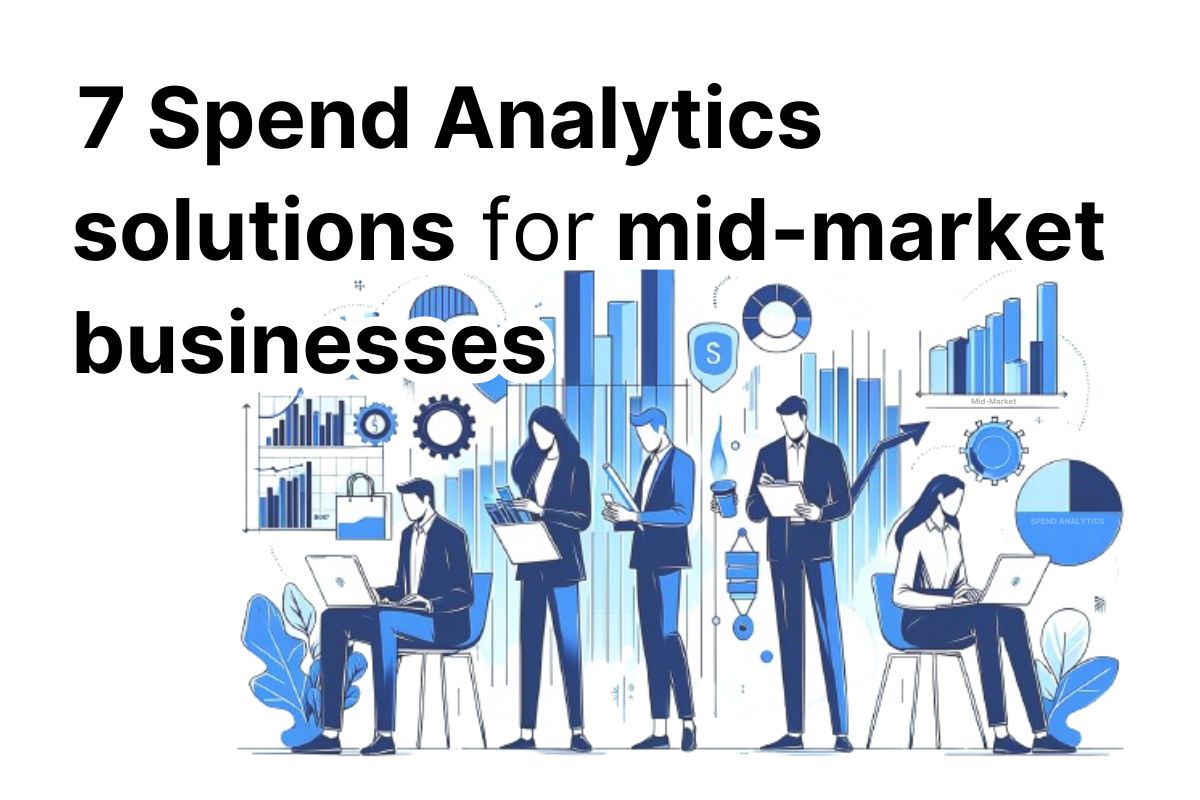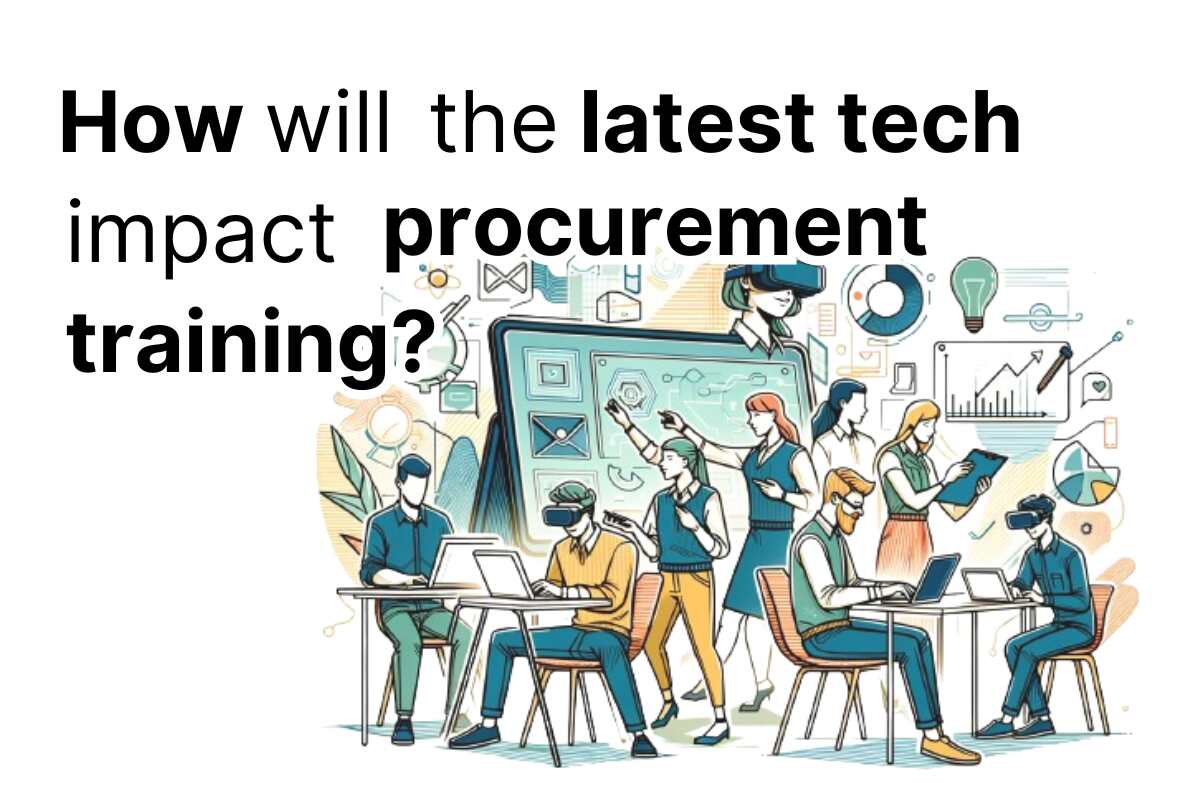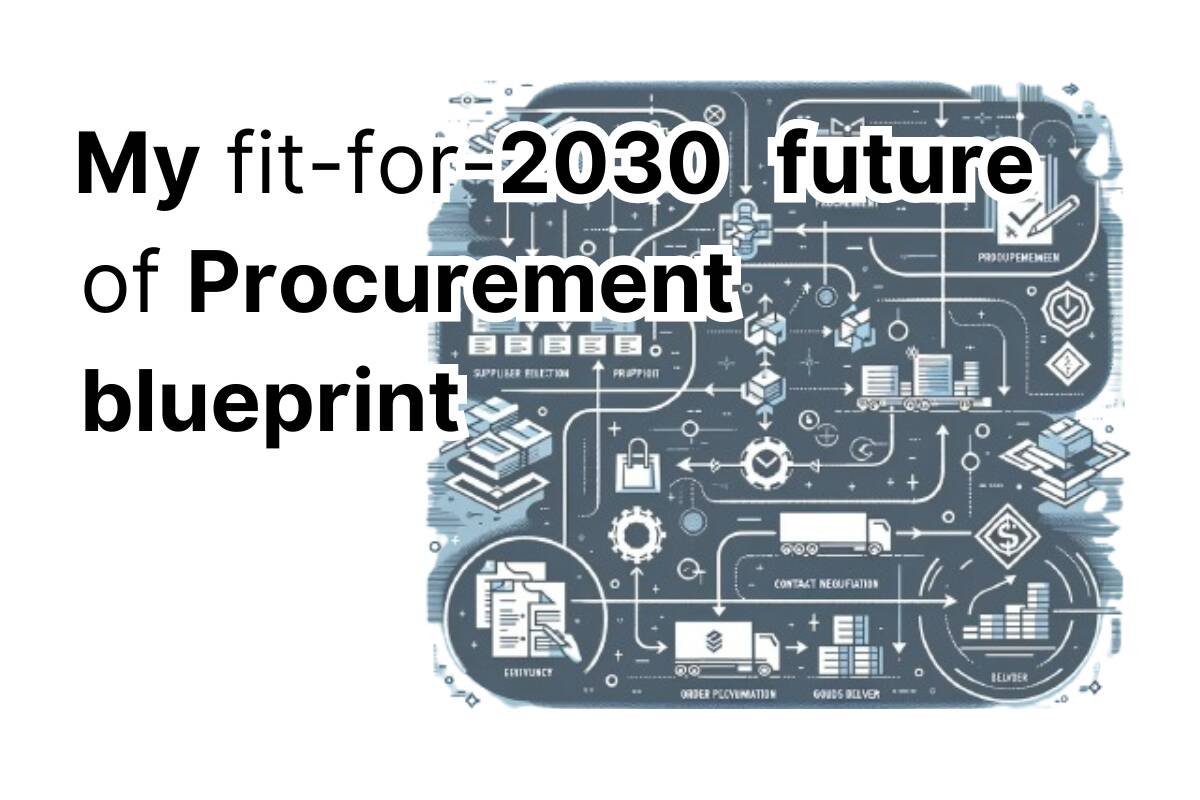Digital procurement tools offer buying teams a once-in-a-generation opportunity. Tech can help pivot their activity from being predominantly tactical and administrative, to being a highly strategic and valued business partner.
Tech can’t do this on its own of course. But, by eliminating a lot of tactical workload, it can free up valuable resources to concentrate on what moves the needle.
Let’s explore how.
What is digital procurement?
Digital procurement is a process where technology is used to streamline the procurement process, both operational and strategic. It aims to make the procurement process more efficient, transparent, and cost-effective. One way it does this is by automating existing manually performed processes.
It can help organisations reduce costs, optimise supplier relationships and increase compliance. It also provides real-time data and analytics that can be used to improve purchasing decisions.
Digital procurement can be implemented using different technologies, which we will explore in detail later in this article. Ultimately, digital procurement enables organisations to enhance the overall procurement experience, as well as increase efficiencies and transform their end-to-end procurement function.
What is procurement tech?
Procurement technology, or procuretech, refers to software which powers these digital tools which automate and streamline procurement. Software can be used to not only assist procurement teams to automate manual processes such as data entry, document processing and vendor communication. It can also provide real-time data and analytics.
These in turn can be used to inform better purchasing decisions and improve operational efficiencies.
The procurement technology landscape includes various cloud-based software solutions.
In its simplest form, this can be split into two segments.
On the one hand are suites which provide a range of functionality as an all-in-one product.
On the other hand are the best-of-breed platforms focusing on narrow and deep approach to a specific use case or connected use cases.
For the avoidance of doubt, traditional ERP systems such as SAP and Oracle are not considered “procurement technology”. Certain procurement-related functionality is, however, present in basic form in these systems.
Procuretech enables organisations to optimise their procurement processes, reduce costs, improve compliance, enhance collaboration and maintain clean data in one single application. It enables organisations to achieve a more efficient, transparent and agile procurement process, thus allowing them to focus on strategic decision-making and business growth rather than transactional and operational tasks.
What technologies power digital procurement tools?
Before we explore how digital procurement tools can eliminate some of the day-to-day workload from increasingly burnt out procurement teams, we first need to take a look under the hood at what technology is used to power these applications.
Optical Character Recognition (OCR)
OCR technology is used to convert scanned documents into editable and searchable digital files. It automates manual tasks like data entry, document processing and improves accuracy, efficiency, and productivity. OCR also enhances customer experience by simplifying access to data, improving response times, and streamlining workflow.
It has become an essential tool for companies in today’s digital world to save time and reduce costs. It is easy to integrate with existing systems and applications. As OCR technology continues to evolve, businesses will benefit from increased automation and digital transformation of routine, administrative processes.
OCR is already able to do a lot of the heavy lifting around automated PO and invoice checking.
If, for example, an invoice is missing a PO number, OCR can flag this and automatically send the invoice into query. It can also help eliminate additional admin work for procurement through spotting gaps on free text purchase orders, and then sending these back to requisitioners for correction.
Robotic Process Automation (RPA)
Robotic Process Automation (RPA) automates repetitive and manual tasks using software robots that mimic human actions. It can be used in both accounts payable and operational procurement. RPA is cost-effective, improves accuracy, and increases productivity by reducing manual processing time and resources.
RPA can be easily implemented without coding and integrated with existing systems. It provides real-time monitoring and analytics, which helps identify areas for improvement and optimisation for maximum efficiency.
RPA allows employees to focus on more critical tasks requiring creativity and critical thinking, freeing them from repetitive work. Businesses can use RPA technology to reduce costs, enhance the overall workflow, and improve customer experience.
“Will robots replace me?” is a common concern among procurement professionals who may feel vulnerable by all of the technological change happening. The simple answer is “no”. Robots are not going to replace everything that procurement does.
Where it will make a big splash, however, is for transactional and operational procurement tasks. We often refer to this as “purchasing”, to distinguish it from the more strategic activities that we see as our core role. RPA will over time take away a lot of the need for operational buyers and purchase admin roles.
Blockchain
“Isn’t blockchain just something to do with Bitcoin?”
Well, yes, this was its earliest use case, but it’s so much bigger than that.
Blockchain is a secure, decentralised digital ledger that eliminates the need for intermediaries, making transactions more efficient, trustworthy and cost-effective. Each block is linked to the previous one, ensuring transparency and immutability.
This technology provides numerous benefits, including enhanced security and transparency, faster transactions, and reduced costs. Blockchain can be used across various industries, including both finance and end-to-end supply chain management.
In the procurement space, however, where it comes into its own is the opportunities it offers for time stamped, fully auditable smart contracts, as well as for raw material traceability in the supply chain.
The potential applications of blockchain are vast, and its role in the digital landscape is continually evolving.
Artificial Intelligence (AI)
Artificial Intelligence (AI) refers to the simulation of human intelligence by machines.
AI has tackled many complicated tasks that previously required human intelligence, such as natural language processing, visual recognition, and decision-making.
AI technology can improve business processes and decision-making by analysing large volumes of data, detecting patterns, and making predictions. One of the classic use cases in procurement is its ability to analyse complex spend data and categorise this data into a spend taxonomy.
Another use of AI is in the contract management space. Here, it can be deployed to spot common contract terms which are unfavourable. It can also identify the best language to use in a contract clause, based on its knowledge of thousands of existing contracts it has previously processed.
As AI continues to evolve, its potential for additional use cases in procurement and supply chain is vast and varied.
Machine Learning (ML)
Machine Learning (ML) is a subset of Artificial Intelligence (AI) that focuses on training algorithms to automatically learn and improve from experience.
ML algorithms can acquire knowledge and make predictions based on data patterns, without being explicitly programmed to do so.
Businesses can use ML algorithms to automate processes, analyse data, and gain business insights. ML can identify patterns, predict behaviour, and make data-driven strategic decisions. It can also improve operational efficiency by reducing manual intervention in decision-making processes.
One of the best use case studies for ML in procurement is through it being able to autonomously source and negotiate simple, straightforward “three-bids-and-a-buy” type of purchases for non-strategic, non-complex tail spend items.
How can procurement tools automate previously manual processes?
Procurement tools can help to reduce repetitive or non-core tasks.
We’ve broken this down how into six distinct categories. These core functions are where you can leverage procurement technology to automate tasks which would have previously been manual.
Each of these uses one of the 5 technical levers we described above to both drive automation, compliance, and create a single source of truth to manage key data.
Process efficiency
- Automating or streamlining the P2P process:
- Enabling stakeholders to self-serve on high volume, low spend and low criticality orders.
- Accounts payable automation
- Supplier scouting – using technology to scrape supplier contact data and the goods or services they supply directly from the internet, instead of manually using a search engine or industry directories to attempt this
- Contract authorisation and signature – automation of the different steps required to obtain authorisation of a contract, and then routing of that contract to the required legal signatories. Avoids the need to send paper documents or chase via email.
- Vendor intake and onboarding – end-to-end automated process for the supplier to enter his required information and for this to be checked and approved by Procurement and Finance or Shared Services.
- Supplier audit – collecting some basic due diligence on either financial or quality performance from the supplier as part of their initial onboarding or annual audit procedure.
Security of supply
- Risk management – covering a broad range of potential use cases. AI, ML and big data / predictive analytics can highlight risks in the supply chain or in a vendor’s financial health and flag these to enable a Category Manager to take the necessary steps to mitigate these risks.
- Shipment tracking – uses Internet of Things (IoT) sensors to identify where a pallet or shipping container is at any point during its transportation
- Inventory management – software which uses predictive analytics to determine optimum level of inventory based on whether a “just-in-case” approach or an
Data and Analytics
- Spend analytics – data analytics which (usually) leverages AI to classify complex a high percentage of an organisation’s diverse spend data. This often originates from multiple different sources., Previously, manual data analysis would have to be performed to pull this into one taxonomy for all purchases.
- Master data management – leveraging AI and having a software platform as a single source of truth for material and vendor master data. Enables cost reduction and inventory optimisation through removing duplicate entries and merging records.
- Predictive analytics – enables companies to leverage big data and AI-driven modelling. This can predict commodity price increases, likelihood of natural disasters or geopolitical incidents, forecasted spend on different materials based on market pricing, and the impact on inventory through changes which may impact the supply chain
Compliance
- Fraud prevention – automated checks on company ownership, bank account verification, identifying patterns in POs and payments etc
- Supplier due diligence – AI-driven checks around social media and news stories in local language, ongoing disputes, company’s owners and directors
ESG
- Carbon accounting – a central repository to report Scope 3 emissions throughout a company’s supply chain.
- Material traceability – blockchain powered insights into where key commodities from geopolitically unstable regions are sourced from beyond the Tier 1 supply chain. Also useful from a quality management perspective.
- Supplier diversity – automates and creates a single source of truth for supplier diversity data and eliminates the need for an administrator or junior buyer to manage complex Excel sheets or databases on a SharePoint site.
Cost reduction activity
- eSourcing – speeds up end-to-end sourcing cycle and increases visibility of historical RFX documents in one single source of truth. Avoids the “desk drawer” problem of supplier proposals being on someone’s C drive or inbox where others can’t access it.
- Tail spend management – automates high volume, low value, non-complex and non-critical purchases by using guided buying techniques to enable the requisitioner to buy an item or service themselves at costs and terms already negotiated by procurement with preferred vendors.
- Automated negotiation – AI and ML-driven bots which are able to negotiate simple terms or purchases without the involvement of procurement. For example, payment terms improvements, discounts for one-off purchases with one-time vendors.
- Cost estimation / should-costing – software which leverages big data and analytics to calculate the theoretical cost of a part based on the design and access to a range of commodity indices.
Human and machine in harmony
The common theme for all of these is that technology can do the heavy lifting. However, in most cases, it will not eliminate the need for a human to interpret the data.
AI is best thought as being the worker bee that can do the heavy lifting. What it can’t perform are the downstream functions to translate the results into a business decision or outcome.
A simple illustrative example can be found in spend analytics. AI-driven spend data classification can highlight that you have 20 suppliers globally for ocean freight, and the spend is evenly spread. But, it doesn’t present the business case to rationalise this spend. Nor does it convince the business to shift to a global or regional preferred supplier.
RPA is where we are likely to see elimination of many entry level, operational and administrative positions. By eliminating routine work, fewer clerical positions will be necessary in future procurement organisations.
New positions are likely to be created in data analyst and data science roles, as well as in-house programmers and software developers who can maintain and build these bots.
There will also likely be investment in communication skills and business partnering, to help procurement improve communication with internal business partners.
Start by understanding what’s out there and what it can do
We hope this has given you an overview of the technology, and how these procurement tools can eliminate busy work.
By covering some of the limitations, we want you to go into a digital procurement transformation aware of these too. Procurement technology is a wonderful opportunity to free up scarce procurement resources to focus on what matters. Having the right tech stack in place to do this is key.
Are you perhaps wondering how all of this can help solve your organisation’s specific problems?
Then please drop us a line! We’d love to guide you through what is out there on the market.
It’s a very specific exercise to grasp which specific solutions may be a good fit for you. This is highly dependent on your organisation’s size, maturity and industry sector, plus where you see your biggest challenges.
We’re here to help and we know the full breadth of solutions out there on the market. Not just the ones that sponsor all the fancy conferences!


